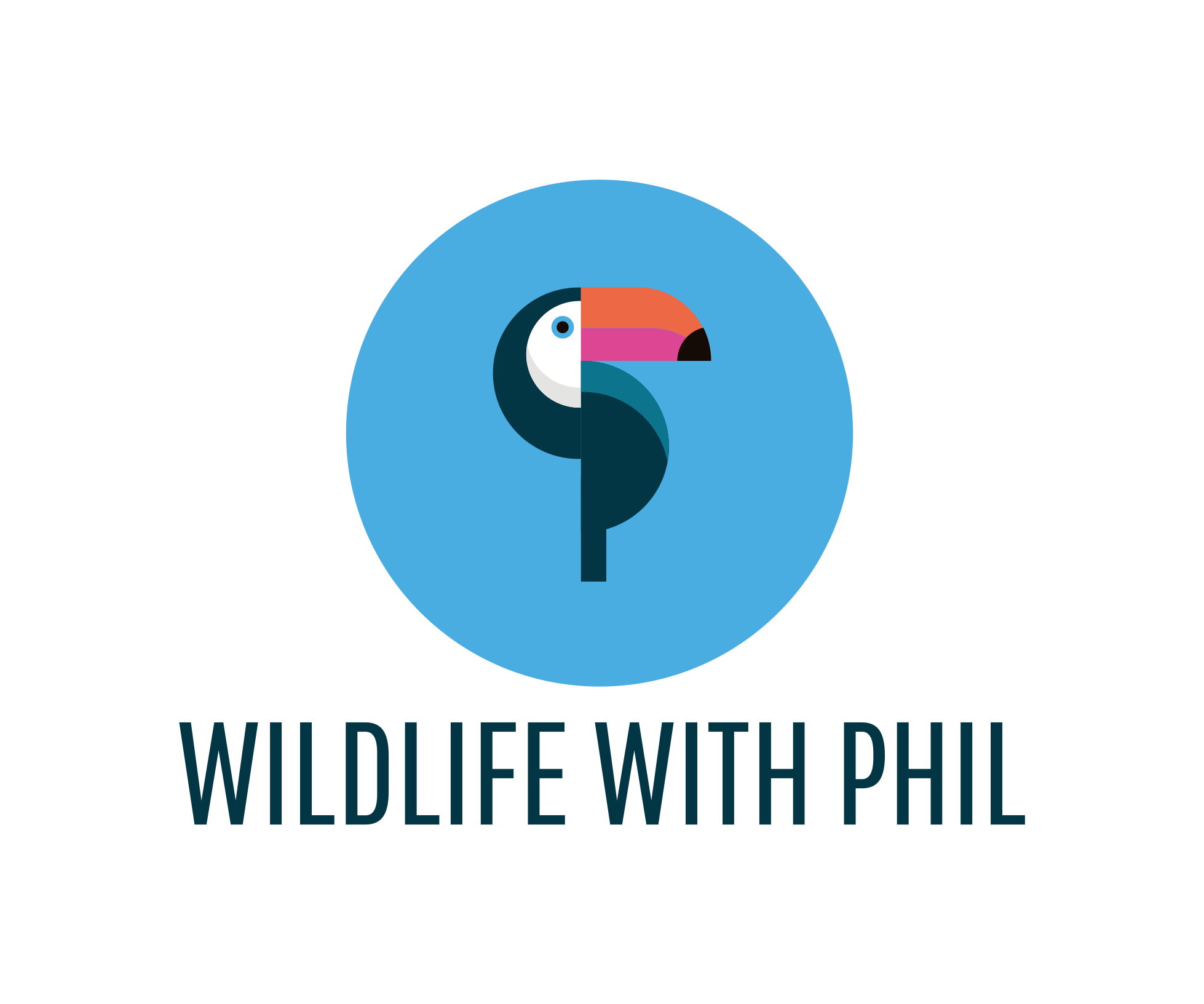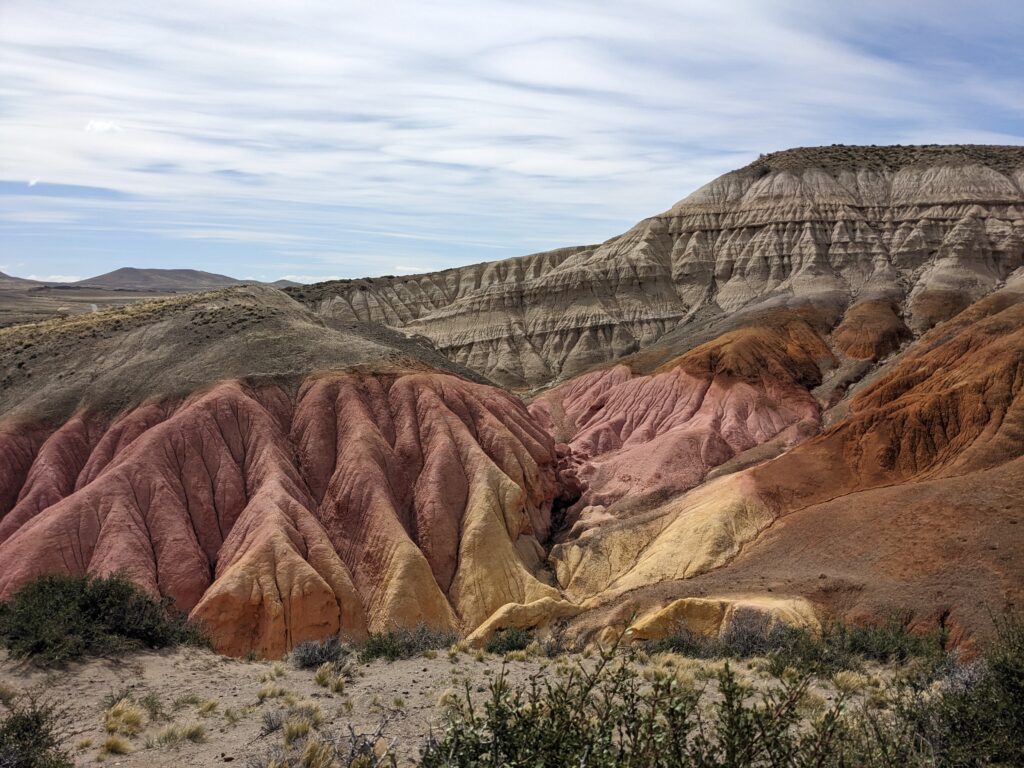
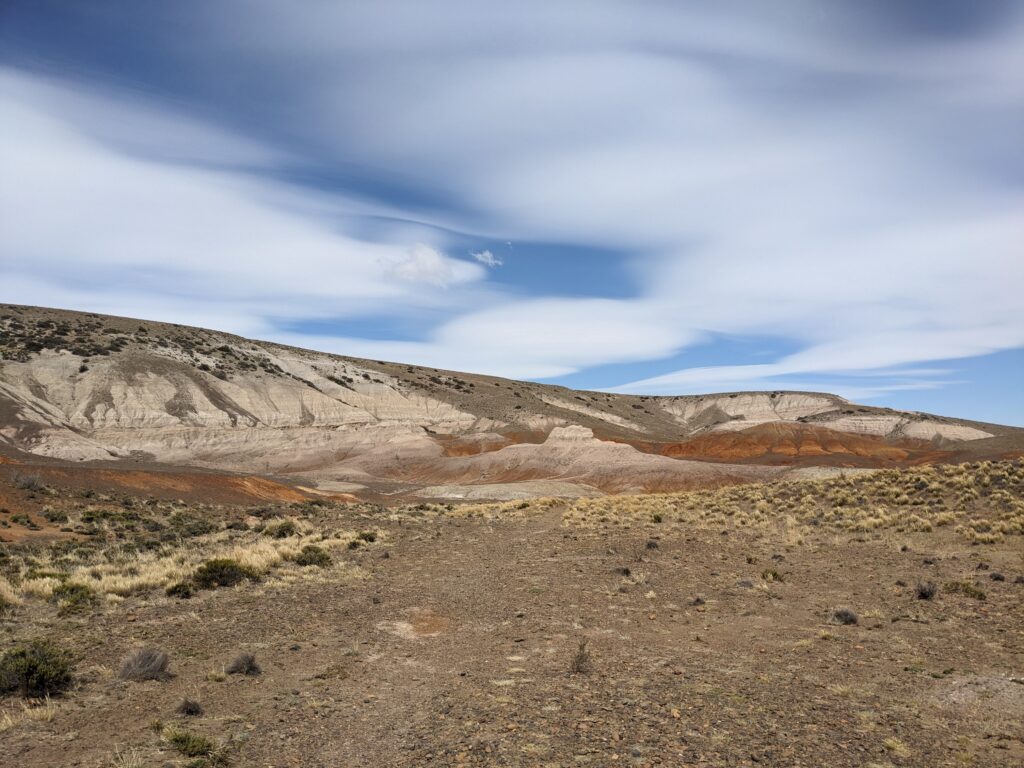
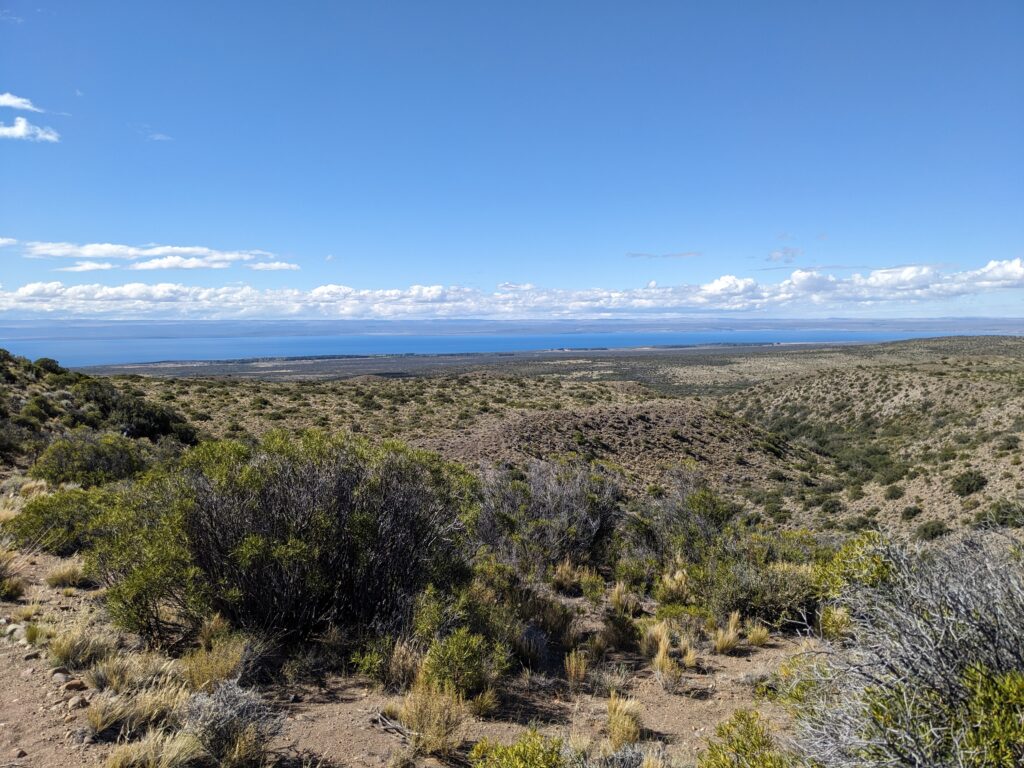
With the exception of Cueva de Las Manos, the well-known archaeological site famous for its wonderful cave art, the majority of Argentina’s Patagonia National Park is surprisingly little visited considering how close it is to the popular Paso Rio Jeinemeni border crossing into Chile.
Having said that, our journey to get there along Ruta 40 was quite the adventure. Heading northwards from the town of Tres Lagos, the road surface to the entrances of Patagonia National Park comprises a mixture of very loose gravel and tarmac riddled with enormous potholes. Add on the 60 kph gusts of wind that we were blessed with that day, and it made for quite the interesting journey in a high-sided van! Let’s just say that Ed did not enjoy getting out of the van to let some air out of the tyres when we arrived at the first gravel section!
Sector Cañadon Pinturas
We visited two of the four sectors that make up Patagonia National Park1. The first sector we visited was Cañadon Pinturas, where we hiked the Sendero Tierra de Colores. This short although very enjoyable 3 km trail winds through strikingly colourful rock formations which showcase the presence of various minerals found in the rocks here. With the strong winds, it wasn’t the best day for hiking so we were grateful to find that it was an easy walk to complete in those conditions.
Sector Estancia La Ascension
The next day, we visited a sector of the national park called Estancia La Ascension. When we arrived, a friendly ranger stationed at the entrance told us about the different hiking trails that we could explore. Luckily the winds had died down, and we selected a long 26 km circular hike to some impressive cliffs called Cerro La Calle and a bird-rich lagoon called Laguna COA.
During the hike we passed through vast, beautiful areas of meadow grassland and Patagonian steppe, up and over mountains, and through lush, wet valleys. We didn’t see a single other person during the entire hike, and much of the trail was narrow and overgrown. It felt as though we were hiking through true wilderness. There were several warning signs at the start of the trail to inform visitors about the presence of pumas in the area, as well as advice on what to do during a puma encounter. To put it lightly, this definitely added a certain amount of ‘wild factor’ to the hike!
As well as pumas, other charismatic species present within the national park include guanacos, foxes, rheas and condors. Of these we only saw guanacos, however, we still get excited about seeing them even after seeing what feels like thousands already!
We did however see a huge number of other bird species. On our way up to Cerro La Calle, we spotted numerous long-tailed meadowlarks and gray-hooded sierra finches flitting between patches of scrub and chattering to each other. Then, as Laguna COA came into view, we heard the piercing call of a black-chested buzzard-eagle overhead. This huge eagle soared in circles above us, giving us a great view of its huge broad wings. We watched as it disappeared from view, and then continued on to the lagoon where there were hundreds of waterbirds, including silvery grebes, red-gartered coots, Chiloe wigeon and what we think were lake ducks (they looked a lot like Andean ducks, but we think Laguna COA is just outside of the range of the Andean duck).
We spent an hour slowly making our way round the lagoon and observing the hundreds of waterbirds, before remembering how far we still had to walk back to the van. However, we didn’t make it far before stopping at a lush, scrubby valley which was teeming with small birds! We spotted plain-mantled tit-spinetails, rufous banded miners, tufted tit-tyrants, rufous collared sparrows, dark-bellied cinclodes, sharp-billed canasteros, a crested caracara and a Chilean flicker. It had been a while since we had seen so many new species and so we were very excited!
Eventually we tore ourselves away from bird-watching and continued with our hike, picking up the pace as we still had 15 km or so to walk. Along our route back we found footprints of lesser rhea and those of a medium-sized mammal, potentially a fox. It was fun to follow the footprints and imagine these animals going about their business just a few hours before. By the time we made it back to the van we were pretty exhausted, having been on our feet for approximately 8 hours. We were therefore very grateful that it is possible to camp at the Estancia La Ascension national park entrance, so we cooked dinner and settled in for the night.
Summary
Patagonia National Park is definitely somewhere we would encourage you to visit if you are looking for some awesome hiking and wildlife watching. We chose our two hikes partially because they were free, but also because neither involved driving long distances down gravel roads! However, if you are spending more time in the area, there are a huge variety of other trails and activities on offer, including rock climbing, visiting the Elsa Rosenvasser Feher Planetarium and seeing the cave art at Cueva de las Manos1.
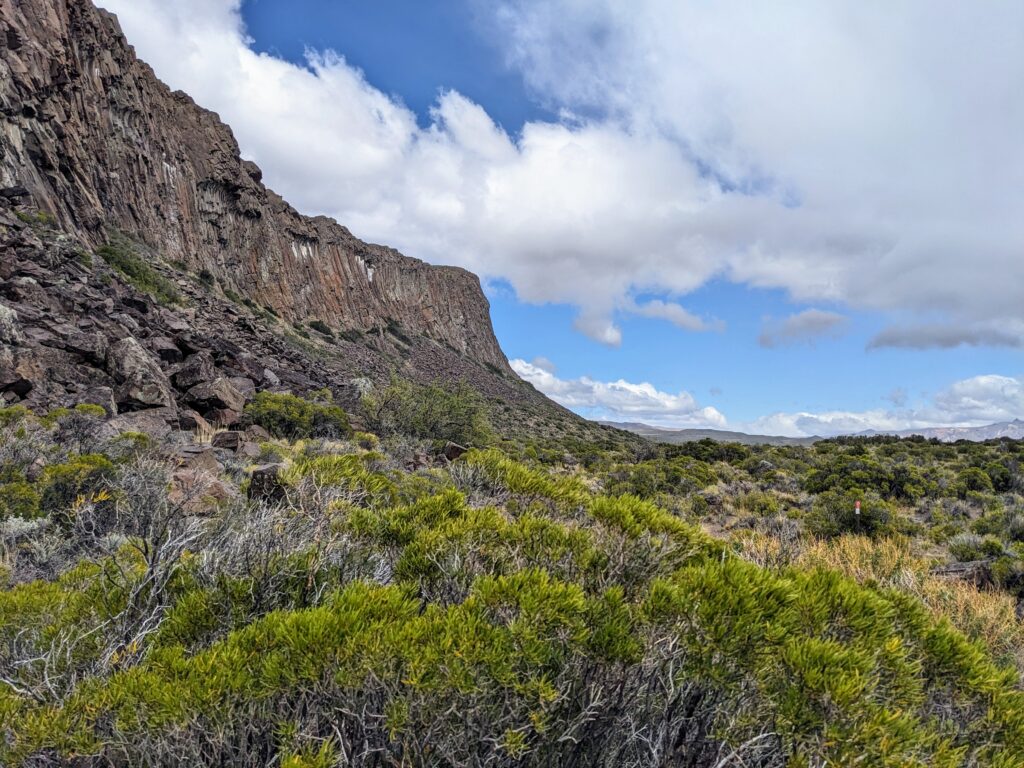
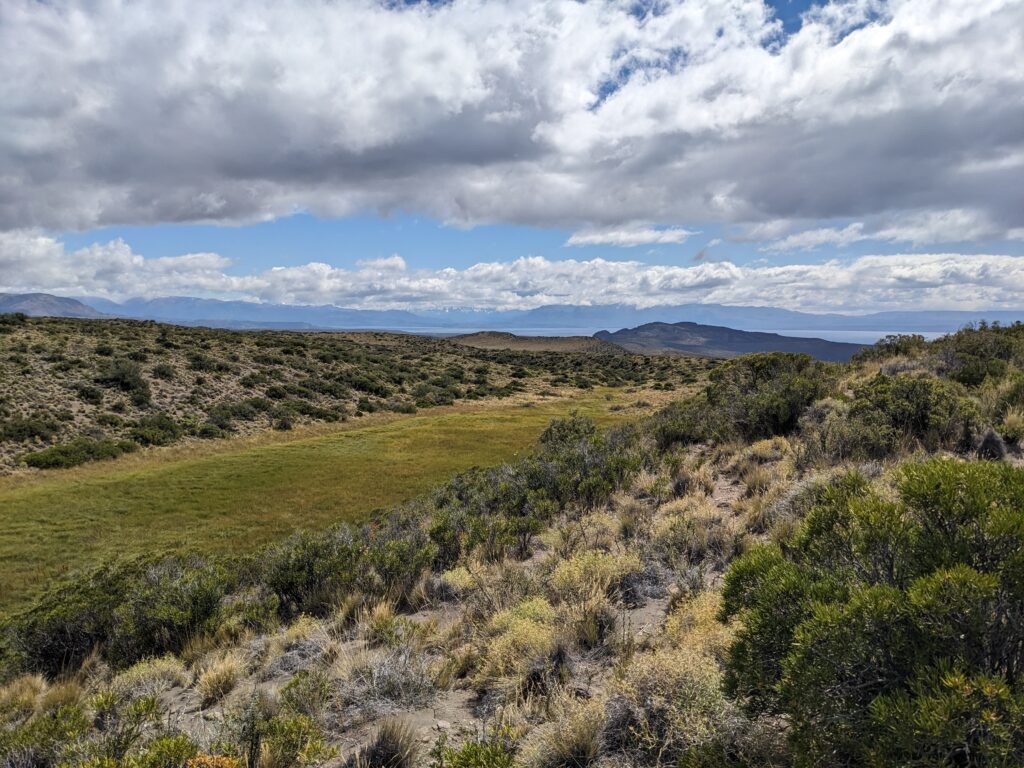
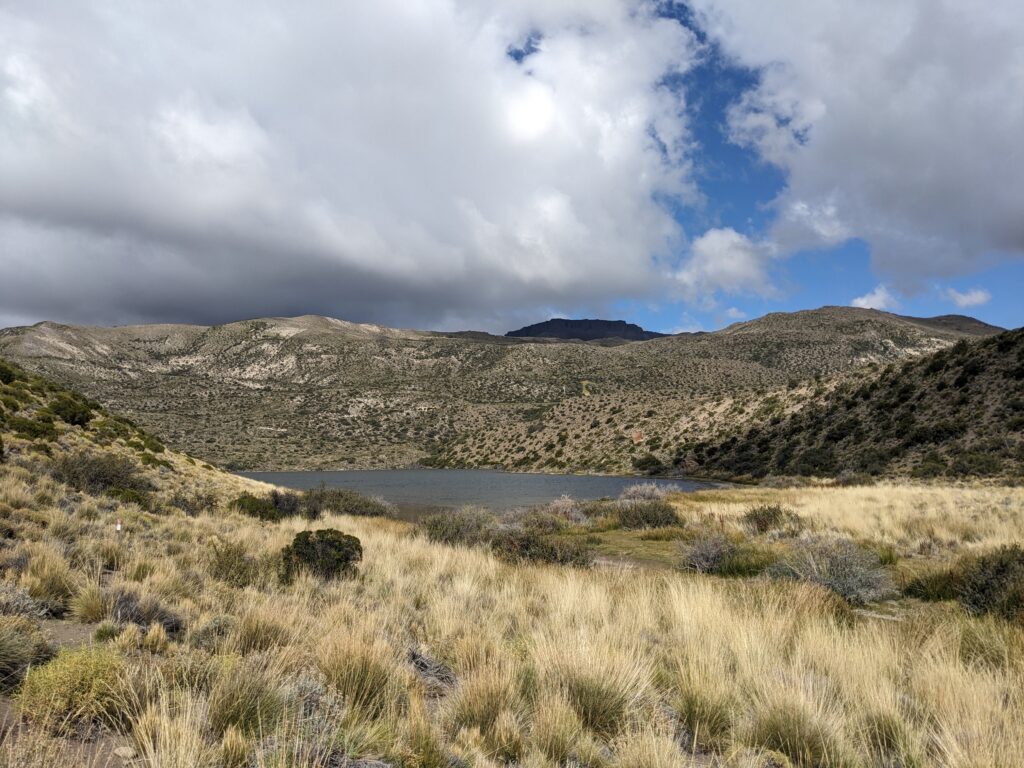
How to get there
There are four different entrances to the national park – Cañadon Pinturas, La Ascensión, El Sauco and Cañadon Caracoles. Each portal can be reached by car as follows:
- Portal Cañadon Pinturas is just off Ruta 40, approximately 57 south of the town of Perito Moreno.
- Portal La Ascensión is along Ruta 43, around 20 km east of the town of Los Antiguos and 40 km west of Perito Moreno.
- Portal El Sauco can be found off Ruta 41, a gravel road which branches from Ruta 40 around 113 km south of Perito Moreno.
- Portal Cañadon Caracoles is where you can find Parque Provincial Cueva de las Manos. It can be reached either from the north, via Portal Cañadon Pinturas, or from the south along Ruta 97, which branches from Ruta 40 around 130 km south of Perito Moreno. Ruta 97 and the road connecting Portal Cañadon Pinturas and Portal Cañadon Caracoles are both gravel.
The roads leading to the entrances of Patagonia National Park can be challenging, so it is advisable to check road conditions before travelling.
When to visit
The warmest months are November to March but this is also when Patagonia’s notorious winds are at their strongest. The summer months are also the busiest. Late spring and early autumn are excellent times of year to visit as daytime temperatures are still fairly high and it is often less windy.
Sources
- Parque Patagonia Argentina: https://parquepatagoniaargentina.org/parque-patagonia/
